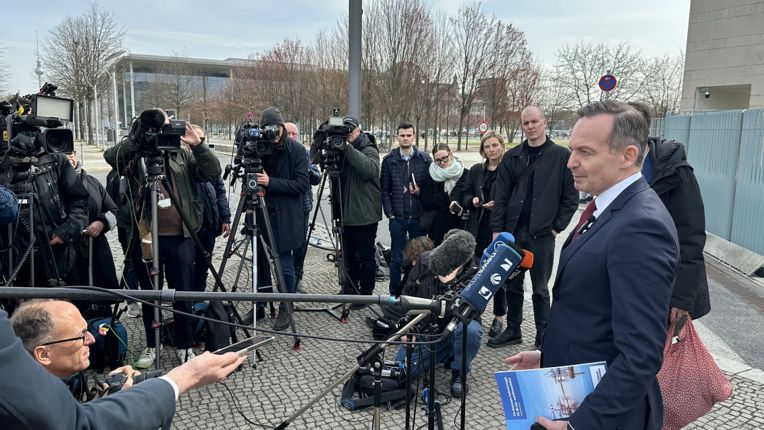Verdi, ZDS reach agreement after five rounds of negotiations
NewsThe German union Verdi and ZDS reached a new labour agreement for 11,500 North Sea port workers, pending a member vote.
The national port associations miss commitments on seaport financing from Berlin. “It seems as if the government has run out of steam.” / Written by Harry de Wilt

Germany’s national government has adopted the National Port Strategy aimed at strengthening the country’s ports – both seaports and inland ports.
The strategy is being heralded by Germany’s transport minister Volker Wissing for the wide range of goals set, for the broad-spectre basis of parties behind its creation and because it includes almost 140 operational measures with which these goals can be achieved.
Five focal areas have been determined for actions to realise them:
The transport and digital affairs department (abbreviated as BMDV) substantiates the need for the newly adopted strategy with both the up to 5.6 million German jobs that depend on efficient ports and the ‘usual’ circumstances that challenge the ports such as climate change, energy transition, the war in Ukraine, the Covid aftermath, Brexit and profound changes in world trade.
“While the ports are the initial responsibility of the individual states, the federal government has the constitutional responsibility for the construction, maintenance and financing of the federal transport routes”, Wissing said upon the strategy’s presentation. “Over the last 10 years alone, the federal government has spent an average of around 500 million euros per year directly on the fairway adjustments on the Elbe and Weser, the deepening of the Outer Ems, works on the Kiel Canal, the expansion of the seaward access routes to Rostock and Wismar and in maintaining and expanding connections to and from German seaports.”
He stressed how Berlin will continue to share responsibility for the ports, including the question of the federal government’s appropriate contribution to the costs of the states.
”But what is important to us is first the plan, then the money. With the shared understanding of the port strategy, we can now work to consolidate the high investments and accelerate planning.”
Wissing praised the ‘exemplary’ collaboration with other federal ministries, Germany’s states, the ver.di trade union and the associations in establishing the roadmap containing about 140 operational measures offering solutions to the ports’ most pressing challenges – from digitalization opportunities to scarce space, skilled workers and resources.
Still, the ‘plans first, money later’ approach has infuriated both of Germany’s national ports’ associations: the ZDS (Zentralverband der deutschen Seehafenbetriebe) for the seaports and the BÖB (Bundesverband Öffentlicher Binnenhäfen) for the inland ports. They are ‘highly disappointed’.
Endorsing the need for an ambitious, future-proof port policy, they lash out at how: “…the cabinet decision lacks one central requirement: the means to implement it. It seems as if the government has run out of steam after a strong start,” it is said in a joint statement.
“In principle, we welcome the National Port Strategy. The seaports have been politically neglected for far too long”, HHLA’s CEO Angela Titzrath, President of the ZDS stated. “It is right that the federal government and the states now recognize this as their shared responsibility. This realisation must now finally be followed by reliable commitments on seaport financing from the federal government – for all ports. Without these investments, the goals of the National Port Strategy remain unattainable – politicians urgently need to make improvements.”
Joachim Zimmermann, President of the BÖB said: “Securing port-related areas as well as reducing bureaucracy and accelerating procedures for approving the planning, construction and operation of port facilities are essential for this. But an ambitious port policy does not come for free. The inland ports need reliable financial commitments from the public sector.”
He called for certain deleted elements from the Long-Distance Rail Freight Transport Network Promotion Act (SGFFG) for port railways to be returned into the 2025 budget and to finally launch a federal-state funding program for the renovation and expansion of water-side infrastructure in inland ports.
ZDS and BÖB see an urgent need for action and welcome the fact that the National Port Strategy contains many important projects that both associations have long been calling for and expressly welcome.
These include urgently needed measures to ease competition, licensing and environmental law for ports, shipping and logistics. ZDS and BÖB cannot see how the ambitious and important goals of the strategy can be achieved without the appropriate financial backing.
Both associations therefore appeal to federal politicians to close this gap in the design of economic programs and the preparation of the federal budget for 2025.